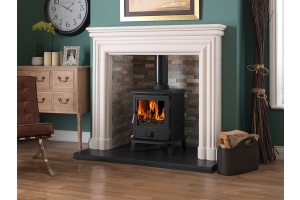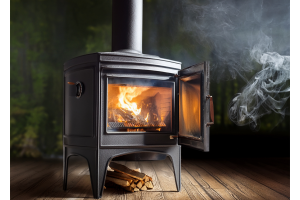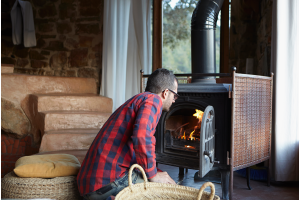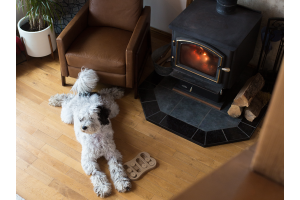Wood-Burning Stoves and PM2.5 Emissions: A Closer Look at the Debate

In these times of global crises and rising fuel poverty, wood-burning stoves have emerged as a crucial lifeline for many families. However, some newspapers have been quick to condemn this heat source, misrepresenting data and overlooking the positive impact it has on people's lives.
While it is undeniable that updating outdated open fires and wood-burning stoves can substantially reduce PM2.5 emissions, we urge a more nuanced examination of the facts. The UK's Clean Air Strategy by Defra suggests that domestic combustion is responsible for 38% of fine particulate matter, based on a 2015 government survey that overestimated wood burning in stoves and fireplaces.
A more extensive and independently verified 2019 survey of over 10,000 individuals revealed a much lower figure, around 13%, for domestic combustion. Furthermore, this assessment disregarded the fact that new Ecodesign stoves emit 66% fewer emissions than Defra's estimations. It is also important to note that the domestic combustion category encompasses outdoor sources such as bonfires, garden incinerators, and even wildfires, making the actual contribution of wood-burning stoves relatively modest.
Indoor air quality is a key concern when discussing PM2.5 emissions. Fine particulate matter, harmful when inhaled, is regulated by the World Health Organization (WHO), with a recommended daily average limit of ≤ 10 µg/m3. In comparison, Central London averages between 18-25 µg/m3. A 2019 study in the US, featured in the Journal of Exposure Science & Environmental Epidemiology, examined 137 homes and found that those with wood stoves had only slightly higher daily PM2.5 levels (6-8 µg/m3) compared to homes without them (6-7 µg/m3), both well within WHO safe levels.
Correctly functioning wood stoves effectively channel air, smoke, and particulates out of living spaces, contributing to these low PM2.5 levels. However, adhering to best practices in stove operation and maintenance is crucial to achieving these results.
Regarding comparisons between wood-burning stoves and other sources of pollution, it is essential to use accurate data. Claims that wood-burning stoves are worse than hundreds of heavy goods vehicles (HGVs) have been widely circulated but are misleading. The data in these comparisons often fails to consider small particle emissions from brake and engine wear. In reality, one Euro 6 HGV produces 13 times more PM2.5 emissions than an Ecodesign wood-burning stove over a week of real-world use. Additionally, emissions from HGVs are released closer to head height, while wood smoke is dispersed safely higher up through chimney flues.
The UK Stove Industry Alliance (SIA) has criticized such claims, highlighting the simplistic calculations and differing measurement protocols in these comparisons.
Not all wood burning is created equal. Modern, efficient stoves, especially those with ClearSkies ratings, are significantly cleaner than open fires and older stoves. Proper installation, regular servicing, and the use of well-seasoned wood can reduce emissions by up to 90% compared to open fires and 80% compared to older stoves.
Sourcing logs from responsibly managed woodlands supports sustainability and biodiversity, benefiting our forests and wildlife. The data from the UK government's 2020 emissions report indicated that domestic indoor burning, including open fires and old stoves, contributed 17% of PM2.5 emissions. In contrast, modern Ecodesign compliant wood-burning stoves accounted for only 1-2% of emissions.
Chief Medical Advisor Chris Whitty's latest report acknowledges the variability in emissions based on stove design, appliance age, maintenance, and wood moisture content, emphasizing the need for informed wood-burning practices.
In conclusion, a more pragmatic and impactful approach to reducing PM2.5 levels should focus on encouraging the transition from open fires and old stoves to modern, Ecodesign ClearSkies rated wood-burning stoves, along with educating users about the importance of using the right fuel.
Read more about how to get the most from your wood burning stove or open fire









